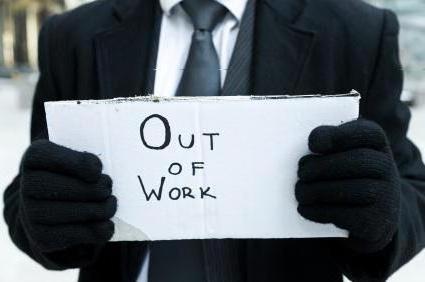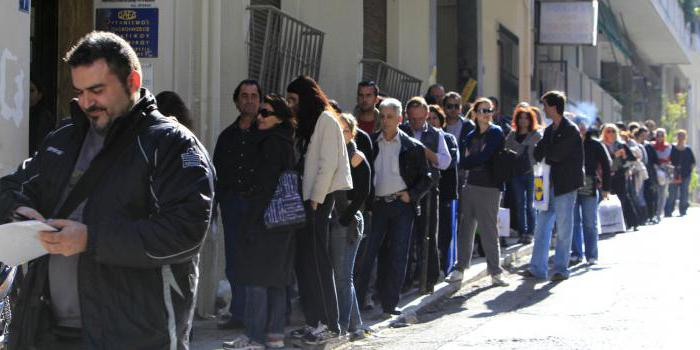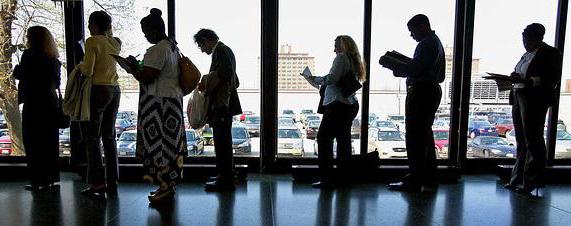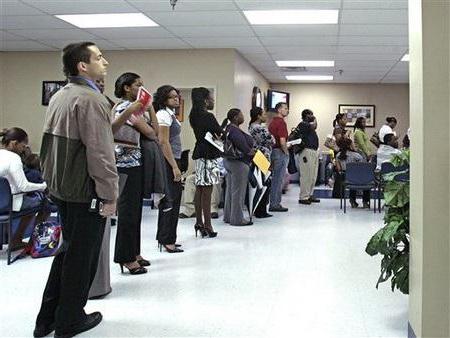There is ongoing debate among economists over what causes unemployment to be, but they all agree that it is a negative phenomenon. Classics and representatives of the Austrian school say that all problems must be solved with the help of market mechanisms. Cyclical unemployment is considered Keynesians, who consider it necessary to deal with it through interventions. Milton Friedman combines the approaches of the first and second. He introduces the concept of “natural” unemployment, which is an integral part of a market economy.

The main types
Unemployment means the underutilization of labor as the main factor of production. It can take various forms:
- Classical unemployment.
- Frictional.
- Structural.
- Cyclic (Keynesian).
Frictional unemployment It is connected with the waiting period, which people are ready to devote to the search for a new place of application of their abilities. We always need time to align our desires with real opportunities. At first glance, good initiatives of the state can contribute to it: setting a minimum wage, increasing benefits to unemployed citizens, introducing mandatory conditions. Therefore, state interventions here remain in question. Structural unemployment occurs when there is a mismatch between the skills of people and the requirements of employers in the labor market.

Sometimes seasonal, natural, and latent unemployment are also distinguished. Economists share a voluntary and forced choice in favor of rejection of employment. The latter is due to social conditions that make unemployment profitable for a certain circle of the population. Voluntary choice in favor of unemployment is made by those who refuse low-paid posts in search of better conditions. This type includes frictional unemployment.
Forced Refusal of Employment
Unlike frictional, classical, structural, and cyclical unemployment are not voluntary in nature. However, one must understand that their existence is determined by the past choice of the people themselves, trade unions or political parties. In practice, it is very difficult to distinguish between voluntary and involuntary unemployment. The most striking example of the latter is the lack of places for the able-bodied population, agreeing to any payment. This situation is usually associated with a recession in the economy, and it is necessary to deal with it through interventions so as not to aggravate the situation in the national economy. Cyclical unemployment is equal to the ratio of laid-offs to the total number of employed vacancies.
Classic case
If settled on labor market Since salaries exceed the equilibrium level, the supply of vacancies is reduced. On the other hand, if they are much smaller than him, then many decide to live on benefits. The higher its size, the more common the situation in question becomes. The decrease in the number of employees leads to a decrease market capacity. Thus, the demand for goods and services is reduced. Therefore, the labor market is declining even more. Some economists advocate its regulation by the state in the event of such crisis situations.

Control problem
Many economists, by contrast, argue for the inefficiency and even disastrousness of government interventions.For example, the establishment of a minimum level of wages increases the cost of labor for low-skilled personnel, so hiring them becomes unprofitable. Consequently, part of the working population is forced to live on benefits. Laws restricting layoffs can also negatively affect the national economy.

Employers are less likely to hire new people in this case, because there is a risk of losses due to the wrong choice. However, many economists claim that oversimplification leads to such conclusions. In practice, equilibrium in the labor market is very rarely established. However, Richard Wedder and Lovell Gullaway have empirically proven that there is a strong correlation between adjusted wages and US unemployment between 1900 and 1990. However, their model does not take into account exogenous factors.
Cyclic unemployment by M. Keynes
All problems in the national economy arise due to the fact that demand does not match supply. In the labor market, this means that the quantity and quality of vacancies does not meet the desires of job seekers. John Maynard Keynes believed that the state can and should intervene in the national economy when the market fails. Keynesian (cyclical) unemployment is associated with a lack of demand. People have a desire to work, but there are no vacancies. This leads to a drop in demand for most goods and services. People just don't have money. Ultimately, this situation leads to a further curtailment of the labor market. This is part of development that cannot be avoided. Keynesians believe that the lack of demand for personnel is a state problem. It is necessary to solve it with the help of interventions. For example, you need to increase government spending. This will increase inflation and make the economy work. You can also expand monetary policy. To reduce unemployment, the state must increase the supply of money, which will reduce interest rates and ultimately stimulate consumer spending.
Marxist attitudes
The Value Added Theory explicitly states that the essence of the capitalist mode of production is to force one part of the population to process and leave the other as a reserve army of unemployed beggars. On the whole, Marx shared Keynes's views on the relationship between demand and employment. However, he stated that the tendency of the market system to cut wages and staff leads to underutilization of resources. Cyclical unemployment is an integral attribute of the capitalist mode of production. The larger the number of working-age population, the lower the salary. Therefore, it is advantageous for capitalists to create competition within the proletariat. According to Marx, the only way to eliminate unemployment once and for all is through communism as an economic system. For modern followers of this trend, the lack of full employment is a testament to the inefficiency of the capitalist mode of production.

On practice
Over time, the economy has experienced many ups and downs. Cyclical and frictional unemployment, therefore, always exist. Recall that the latter is a voluntary choice of people. Cyclical unemployment, examples of which in practice are always associated with the presence of these ups and downs, contributes to the recession, which leads to the dismissal of many people. For example, during the Great Depression in the United States, the level of cyclical unemployment was 20% (plus friction and structural). This meant that one in four people of working age could not find a place for themselves.

Cyclical unemployment: examples
The level of unemployment among the able-bodied population directly depends on macroeconomic activity.The latter does not develop linearly, but cyclically. When economic activity expands, the demand for labor increases in the labor market. Unemployment occurs during a recession, as enterprises try to reduce their costs and stay afloat by firing part of their staff. Slow growth during recovery from depression also does not increase employment. Enterprises in this case usually believe that they can cope on their own, that is, without unnecessary additional costs.
![cyclical and frictional unemployment [1], structural and cyclical unemployment](https://bizpro.htgetrid.com/static/img/a/11627/211770/18308.jpg)
Full employment
In demand theory, it is possible to reduce cyclical unemployment by increasing aggregate demand on goods and workers. All in accordance with the Phillips curve. Inflation leads to a decrease in unemployment, and vice versa. However, sooner or later we come across a barrier. Milton Friedman explained his existence by the presence of a natural level of unemployment. Common sense also suggests that low inflation rates affect demand in the labor market, but only in the short term. You also need to understand that there are always hidden unemployment and employment, so official statistics do not always reflect the real situation in the national economy.
The capitalist production system is used today in most countries of the world. Only the methods and degree of state intervention vary. Therefore, cyclical unemployment is a certain percentage in any country during a recession or recession, and this has to be reckoned with. Overcoming it, according to most economists, is in the hands of the government. In addition to it, there are structural and frictional unemployment, which together form a natural level of unemployment.
